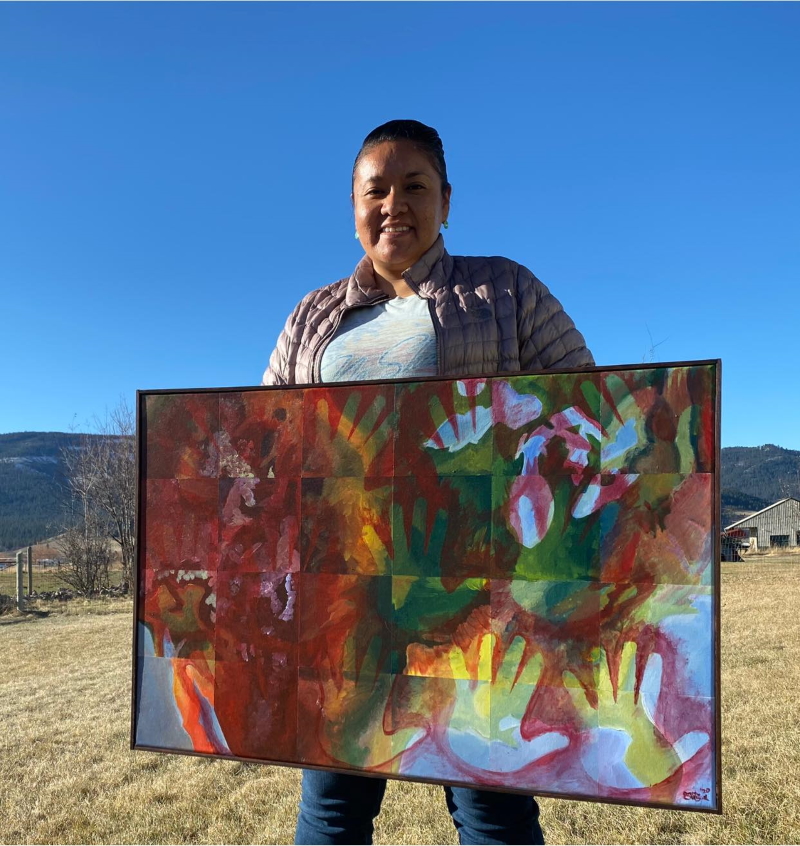|
I heard it through the grapevine. Welcome to the latest news about classical & contemporary art and artists from MappaArt’s global art grapevine. |
Art exhibit honouring missing and murdered Indigenous people opens in BozemanSource: Nora Mabie | Great Falls Tribune “We Are Still Here and This is Our Story,” a group exhibit that honours and advocates for missing and murdered Indigenous people, opened on Friday at the Emerson Center for the Arts and Culture in Bozeman, Montana, USA. The exhibit, which features contemporary art, beadwork and fashion design from 11 Native women artists, will be open through Feb. 28. Ten of the featured artists are women from Montana.
“Indigenous Hillshade,” 24 x 36 in., Acrylic on canvas, 2020, by Salisha Old Bull via Facebook |
The Scottish Sisters Who Pioneered Art NouveauSource: JStore Daily Margaret and Frances Macdonald and their Glasgow School of Art classmates, Charles Rennie Mackintosh and Harold MacNair, were Art Nouveau’s Glasgow Four.
Spring, by Frances MacDonald (c. 1900-1905) via Wikimedia Commons |
The Rijksmuseum Has Made 709,000 Artworks Available for Free OnlineSource: MyModernMet The Rijksmuseum’s online collections known as Rijks Studio are easily searchable by artist, object type, period, and place. Users will encounter magnificent 17th-century portraits by Frans Hals, realistic still life paintings, and ornate furniture, including one opulent dollhouse in a cabinet. If you start searching the collections, you are sure to find art and artists you never knew existed.
View of Houses in Delft, Known as ‘The Little Street’, Johannes Vermeer, c. 1658. (Photo: Rijksmuseum [Public domain]) |
An Origami Samurai Made from a Single Sheet of Rice PaperSource: Twistedsifter Origami artist Juho Könkkölä spent 50 hours folding an origami samurai from a single square sheet of paper, with no cutting or ripping used in the process.
Origami Samurai, by Juho Könkkölä via twistedsifter |
Rarely-Seen Illustrations of Dante’s Divine Comedy Are Now Free Online, Courtesy of the Uffizi GallerySource: Mymodernet Illustrated editions of Dante’s poem began appearing in 1472, and the first fully illustrated edition in 1491. By the late 16th century, the poem had become a literary classic (the word Divine joined Comedy in the title in 1555). By this time, the tradition of depicting a literal, rather than a literary, hell was firmly established.
Frederico Zucarri’s Illustration of Canto I from Dante’s ‘Inferno’ (Photo: Helvio ricina, CC BY-SA 4.0, via Wikimedia Commons) |
Author Archive: Kevin Chilton
Primal Scream
Preview in new tab(opens in a new tab)

“How do you create a work of art?”
So asks the article 10 Contemporary Artists Talk About Their Creative Process, from Park West Gallery. The article then continues with,
“That sounds like a straightforward question, but it has millions of potential answers. Every artist in the world has their own unique way they approach a blank canvas. Some come prepared with sketches and outlines. Others wait for a spark of inspiration until the last minute. They’re all performing similar actions—painting, drawing, etching, sculpting—but it’s the subtle variations in how they perform each one that really defines them as an artist.”
This post is the first in a series, in which other contemporary artists will talk about the creative process that enables them to “create a work of art”. And, as is only appropriate, this first post is from the modern Dutch artist Siegfried Wolfgang Päschke, whose artistic legacy is exhibited in the MappaArt galleries.
The Early Years
Wolf was born in Krefeld and raised in Kleve, in Germany, close to the Dutch border. In the early seventies, Wolf moved to Nijmegen in the Netherlands. In 1976 he enrolled in the nearby Academy of Arts in Arnhem, now part of ArtEZ, to study painting, drawing, photography, and graphic art. On graduating in 1981, he settled in Nijmegen to begin his life as an artist. Apart from his travels to Saba (1982), South East Asia (1992), and South America (2002), he lived and worked in Nijmegen until his death in 2003.

Wolf on Saba in the Netherlands Antilles
The Prolific Years
Although Wolf died in 2003, he left extensive records. From these records, we know that for extended periods of his life, especially during his travels, Wolf produced a painting or drawing per day. In these images, he fused the daily scenes around him with his memories, dreams, and musings on the future. Wolf called this stage of actually committing an image to paper, the Primal Scream of the work. The resulting multiple journals of Primal Screams, produced in the years between 1982 and 2003, he called his Drawn Diary.

Wolf’s 21 journals with about 30 drawings per book.
The first book begins on June 13, 1994, and the final book ends in 2000
Later, Wolf then used selected images from this Drawn Diary, to create further works of art, including monoprints and larger paintings. Fortunately, among the records Wolf left us, was the following video. So, I leave it to wolf himself to explain the methods and processes he used to produce his art, in his own words, in three languages.





